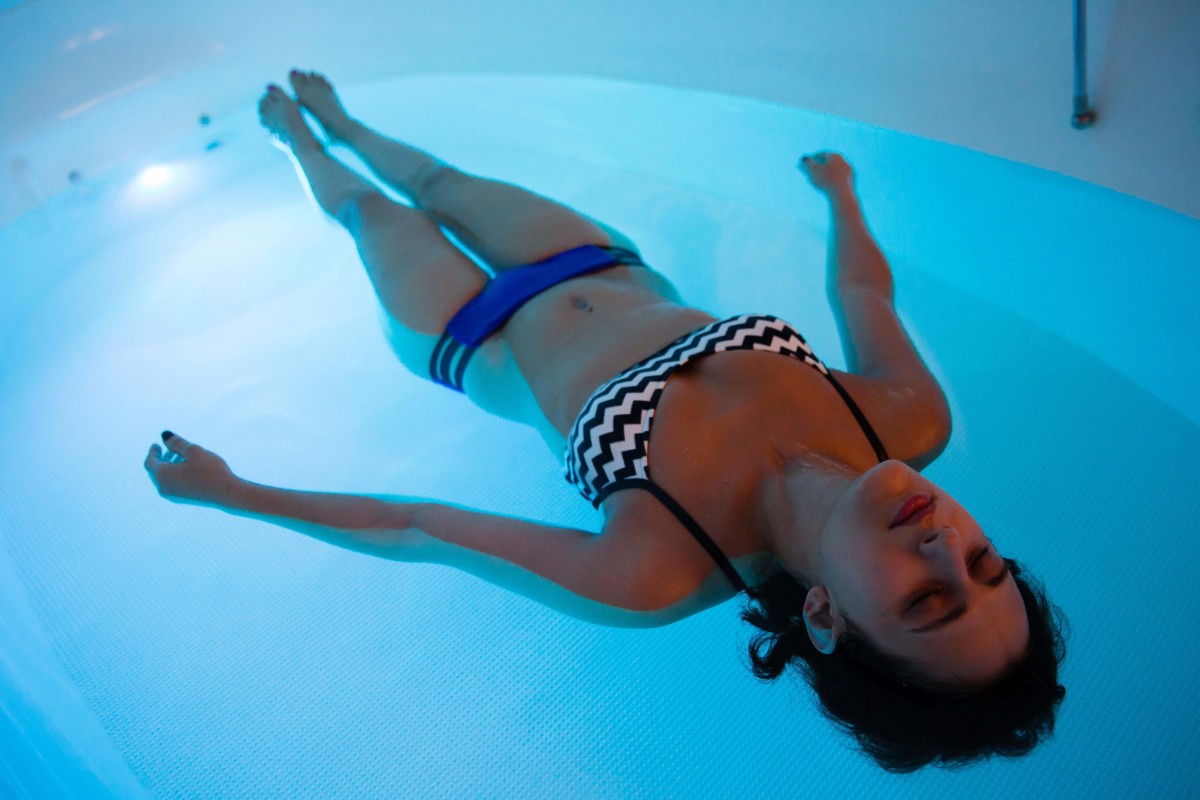In days gone by, for anyone wishing to gain the sensory deprivation tank therapeutic treatment, it meant being blindfold or placing the fingers in the ears. These are procedures that were once considered to be, not unusual! However, this form of therapeutic treatment experienced significant changes in 1954. This happened due to an unconventional question asked by a neuroscientist by the name of John C. Lilly. It raised the issue as to what would be the result if the mind of an individual was deprived of as much external stimulus as reasonably possible.
Retaining that thought in mind, for those not totally familiar with past forms of floatation therapy; in the original treatment, you would have been suspended in a sensory deprivation tank that contained 160 gallons (605.6659) litres. You would have been completely submerged, with the only exception being, the top of your head. Reminiscent of a horror movie, you wore a mask that entirely blanked out your vision, and also acted as an air supply. The water in which you lay submerged and the air temperature were maintained at the same temperature as your skin. That’s approximately 34 degrees Celsius (about 93 degrees Fahrenheit).
The previously mentioned masks were eventually replaced by other methods together with the experience of complete water submersion. A substitute was the volume of water being steeped with 800 pounds (362 kilograms) of Epsom salt. This had the effect of making the water dense, to the degree that you are able to float with your entire body at the surface of the water, despite the shallow depth.
A sensory experience
There are some questions made by people from all walks of life regarding the effectiveness of a sensory deprivation tank. They would want to know the benefits and the purpose that floatation therapy offers in real life if it has the capacity to activate the mental powers and provide a gateway to another dimension. Furthermore, they are curious as to why would people even choose to undergo this type of therapy.
Although the sensory deprivation tank has been undergoing various transitions during the past years, it remained a salt-water filled and temperature-regulated, as well as a sound and light resistant tank. It is capable of isolating the occupant from many and varied forms of sensory input at the same time. The general design and purpose of this floatation therapy facility have remained primarily the same. However, this was what John C. Lilly had to ask: What does your brain experience when it is completely isolated for a time period within another and totally remote environment?
A sensory deprivation tank is a totally isolated, safe and hygienic environment. It provides a complete escape from the world outside which offers relief from mental stress and physically induced tension. Various studies conducted showed the human response to gravity. The sensory input consumes up 90% of your Central Nervous System (CNS) activity. The present day formula involves 25cm of dense salt water, in which 350kg of Epsom salt is dissolved. This enables a floatation therapy experience whereby you float effortlessly in a solution with greater buoyancy than the Dead Sea.
A different healing process
A sensory deprivation tank offers a significantly refreshing healing procedure to the overall wellbeing. Anyone can experience a complete relaxation of the body and mind when submerged inside the tank. The majority of people have become accustomed to dealing with and adapting to the various acute stress factors associated with their everyday lives. However, with regards to chronic stress influences, such as air pollution, noise, and various stressors, they are challenged. These have the potential of creating imbalances in their systems which may become apparent with various physical illnesses and mental strain.
The good news is that there are a variety of benefits related to floatation therapy. Amongst the foremost is the extreme and positive buoyancy that produces an effect similar to anti-gravity. This induces the release of physical stress factors such as body tension. Within the sanctuary of the sensory deprivation tank, external input is virtually eliminated. Thereby permitting the nervous system a crucially needed respite from the usual and ongoing lifestyle pressure that is an intrinsic part our lives. Floatation therapy provides the sheer rejuvenation of our body systems in experiencing complete peace, tranquility and wellness.
It has also been revealed that treatment received in a sensory deprivation tank is capable of significantly reducing levels of the stress hormone called cortisol. This particular hormone is a contributor to gaining weight and influencing health aspects related to anxiety and depression. Within the tank, there is the complete darkness that helps you to relax and enjoy a peaceful and quiet environment. You will also be able to listen to the beat of your heart and even the slightest of sounds in your body system. Floatation therapy is to a significant degree, motivated by the extraordinary buoyancy of the water. It complements your environment with the sensation of a zero-gravity quality. The absence of a temperature differential induces an almost bizarre feeling of being unable to determine where your body ends and where the water and air commence.
Floating can complement osteopathy treatments for a range of conditions from back pain, neck pain, weight loss or rehabilitation.
A sensory deprivation tank is specifically designed to create an isolated, calm atmosphere that is a perfect environment. It has the purpose of relaxing and rejuvenating your mind and body. There has been various research conducted on the use of flotation therapy. Some of which has shown that experiencing a floatation therapy session for 1 hour is equivalent to 4 hours of deep sleep. That is why this treatment could be regarded as one of the foremost and effective relaxation techniques.
If you are interested in finding out more or booking a float, contact Elevation Floatation 8589 3196

